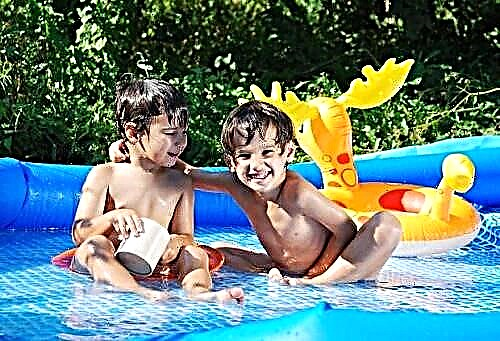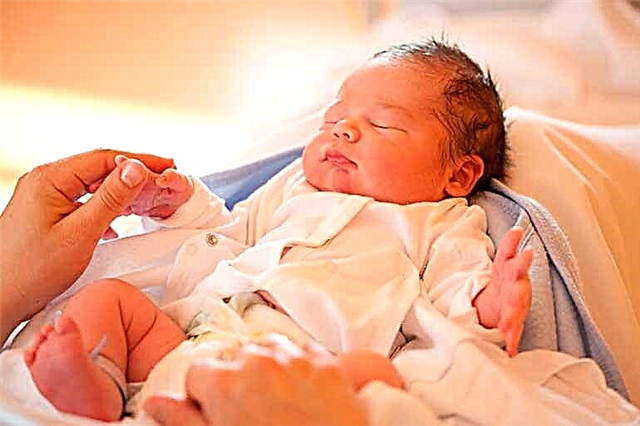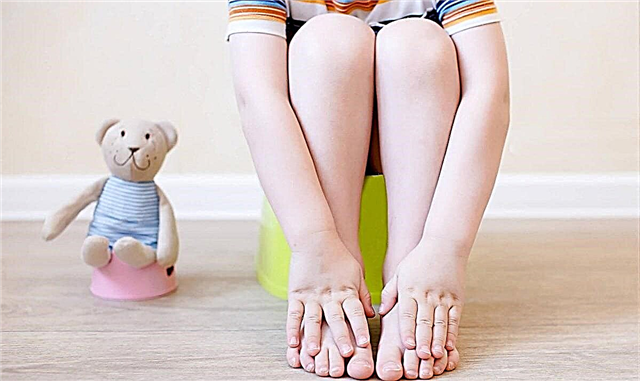The first year of a baby's life is not only the most difficult for his parents, but also a record one in terms of the number of changes observed, both in terms of physical development and psychoemotional abilities.

Baby
Frequency of growth spikes
Growth jumps in children under one year old are periods in which parents note significant changes in the behavior and skills of the baby. It happened with every mother that she woke up one morning and realized that today the child seemed to be replaced - he does not let her leave for a long time, requires a toy or does not fit into her favorite jumpsuit. Before each new stage of development, the body is gaining strength and accumulating potential in order to surprise itself and parents with a new skill at some point.
During the first year of life, up to 7 developmental leaps can be observed in a child:
- With the first, parents will encounter immediately after the end of the neonatal period - after 28 days of life;
- The second time the baby will change behavior and become slightly different at 2 months;
- By the middle of the 3rd month, another landing net will occur, which will not go unnoticed;
- At 5 months, the mother will begin to notice that it has become more difficult to walk with the baby. This is the hardest fourth jump. It arises because the baby already holds his head well and wants to sit down, but he cannot yet, hence a bright crisis;
- The fifth jump will come right after the baby is six months old;
- For the sixth time, there will be a crisis after 8 months, when the baby confidently sits down and begins to perceive the world in a vertical plane;
- The very last, seventh jump, occurs when the child turns 10 months old. At this age, almost all children know how to stand and have already tried to take their first steps, but they cannot walk confidently yet, which causes nervous crises.
If the mother keeps a diary of the baby's development, a calendar of the baby's developmental leaps is formed in her notes, based on the notes that on certain days the baby was especially nervous for no apparent reason.

The kid got upset
Important! Adults shouldn't take it out on babies. Increased moodiness has nothing to do with damage to character. Children themselves suffer from the fact that their psyche is undergoing drastic changes, therefore at such moments the crumbs need support and care even more.
Why growth spikes are called crises
The abrupt development of the nervous system does not allow the child to sleep peacefully and excites the mind. The kid, knowing more and more the world around him, realizes his helplessness and every day more and more emotionally attached to his mother.
Each new skill at first makes the baby very happy, for example, the first flip from back to stomach. When he fails this trick again, the baby, with his usual maximalism, will start screaming.
Growth leaps are called crises, because at certain moments the baby's psyche cannot withstand the colossal load. The child is forced to sharply react with hysterics to changes in the body and endlessly incoming information in huge quantities.
Physiological development of children under one year old
Rapid development can be easily associated with the calendar of growth spurt in children under one year old. In just a year, babies grow by more than 20 cm. The girth of the head is rapidly increasing, by which one can judge how quickly the child's brain is growing.
Physical development of children of the first year of life
| Age, months | Acquired physical skills | Distinctive features of age |
|---|---|---|
| 1 | At this age, the neonatal period ends, the child no longer concentrates on unconditioned reflexes. He learns to lift his head while lying on his stomach. | The world around opens to the child. He realizes that, in addition to his personal needs, there is light and darkness, silence and sounds. This innovation is the impetus for the first crisis. |
| 2 | The child manages to hold his head longer, he begins to understand where the loud sound is coming from, and turns his head in his direction. | The first conscious smile suggests that psycho-emotional perception of the world begins to develop. |
| 3 | Kids, lying on their stomachs, begin to try to lift themselves up on their arms, roll over from back to stomach and back. | Any unsuccessful attempts will be a real disaster for the baby. |
| 4 | At this age, children learn to take small objects and pull them into their mouths. | Age does not differ with a large number of nervous breakdowns. |
| 5 | For the first time, a child tries to take an upright position, leaning on pillows or elbows. | There is a sharp change in the baby's mood associated with the unwillingness to lie on his back. |
| 6 | Sleep duration is significantly reduced, the child can sit with support. | The restructuring of sleep and wakefulness modes, as well as the desire to constantly sit, cannot pass without leaving a trace for the baby's psyche. |
| 7 | The ability to take toys brings a significant variety to the child's leisure time. | The baby is more often calm than irritated. |
| 8 | The skill of standing up with support captivates the child, and he does not get tired of training again and again. | Attempts to walk with an added step at the support are not always crowned with success, which significantly upsets the baby and often causes tantrums. |
| 9 | The already minted side step becomes the main occupation. | The child is happy most of the time. He enjoys getting up and walking upright. |
| 10 | You want to turn a boring side step into movement without support. | Unsuccessful attempts give rise to loud tantrums. |
| 11 | At this age, children train upright walking. | Usually this age does not include any crisis moments. |
| 12 |
Important! The calendar cannot predict every growth spurt in babies. We must not forget that all babies are individual and develop with some deviations from the generally accepted terms.
Psycho-emotional development of babies
The newborn spends most of the time in a dream, he is almost not disturbed by sounds. Only a sharp loud sound or a bright light directed directly at the closed eyelids can wake the child up.
At 1 month old, babies begin to see the world around them, with the help of the movement of their eyeballs, to follow slowly moving objects.
At 2 months, children understand the sleep and wakefulness regime, they manage to adhere to it. The first emotional manifestation in response to external factors can be noticed at this age.

First smile
A three-month-old baby begins to recognize his mother not only by smell, but also externally. The child is attracted to toys.
At 4 months, babies can play on their own longer if the toys are close. The kid is not afraid to be alone, he can calmly spend some time alone with bright objects.
At 5 months, children understand the intonation of adults well, and also recognize themselves in the mirror.
A six-month-old baby reacts to his name and tries to pronounce the first syllables.
From 7 to 8 months, the ability to distinguish between familiar people and strangers develops. Therefore, children of this age are reluctant to go to the hands of unfamiliar relatives.
At 9-10 months old, babies easily recognize their grandmother or mother among people and can express their joy by waving to them.
After 11 months, the child understands prohibition words that can be very upsetting. If he hears that he should not touch or do something, the upset can be too emotional and lead to hysteria.
Growth spasms symptoms
Growth jumps in children under one year old are accompanied by characteristic symptoms. Each age may have its own distinctive characteristics, mainly the behavior of children during crisis jumps includes the following points:
- Frequent crying for no apparent reason. It can be heard when the child is full, does not suffer from heat or pain.
- Reluctance to let go of the chest. Having sucked out all the mother's milk, the baby continues to hang on the mother.
- Apathetic attitude towards the game. After another emotional breakdown, the child does not want to learn the world through play.
- Constant desire to be in mom's arms. The kid, experiencing difficult moments, refuses to be alone with his experiences. He needs tactile contact with his mother.

Asks for pens
Additional Information! Simultaneously with capriciousness, the baby gains restless sleep. Often waking up in a bad mood, he needs his mother's hug. That is why psychologists sometimes advise parents to take their children to their bed to allow all family members to sleep.
How to behave for parents during this period
Parents should not be upset about the frequent crying of the child. It is difficult for a small person to keep up with a rapidly growing body. Growing bones and muscles can cause an unpleasant pulling sensation in the baby. Mom does not need to look for hidden diseases and cures for them.
If the parents manage to maintain composure and not turn into a bundle of nerves, it will be much easier for the child to survive each of his crises. At this time, mom can:
- go outside more often in good weather to distract the baby from his difficult workouts;
- talk affectionately with the baby, avoid a harsh tone;
- hug the child more often so that he feels the support of his family.
Important! The most difficult thing is for the mother, who, during the crisis days for the baby, must manage to cope with household chores. Therefore, it is at these moments that mom needs dad's help.
How can you help the baby
The child's body during the period of active development can be helped by a well-composed list of activities that the mother organizes:
- Exciting games will help the kid escape from the misfortune that has happened. Mom can more actively teach the child about colors, shapes or sounds, depending on his age.
- Helping you do the tricks will add confidence to your baby. If mom holds or nudges her hand when necessary to ensure the trick is successful, the baby will have no reason to be upset.
- Daily gymnastics aimed at training the muscular skeleton will help relieve the physical pain that occurs due to the rapid growth of bones and tissues. Pediatricians consider training on fitball to be an excellent option.
- Timely rest is what every workout should end with.

Fitball lessons
Children under one year old get tired within 10 minutes after the start of classes. Therefore, it is necessary to take breaks every 5 minutes, if the activity did not interest the baby very much, and every 10 minutes, if the baby was carried away by the game.
Growth table for babies up to a year
Most babies are born with a height of 48 to 52 cm. Boys are usually slightly larger than girls. Growth leaps are noted in both sexes at about the same time.
Growth change by month
The table shows the average values of the increase in the body length of babies up to a year. The given data should not be taken as an exact schedule, however, significant deviations from the indicated values can be considered as a reason to contact a pediatrician.
Growth jumps in babies by month
| Age, months | Boys, cm | Girls, cm |
|---|---|---|
| 1 | 54,5 | 53,4 |
| 2 | 57,7 | 56,9 |
| 3 | 61,3 | 60,2 |
| 4 | 63,8 | 62,1 |
| 5 | 66,9 | 63,9 |
| 6 | 67,7 | 66,6 |
| 7 | 69,6 | 67,4 |
| 8 | 71,2 | 69,8 |
| 9 | 72,8 | 70,6 |
| 10 | 73,9 | 72,1 |
| 11 | 74,9 | 73,6 |
| 12 | 75,7 | 74,8 |
The table shows that the sharpest growth spurt occurs in the first month of a child's life. He can add about 3 cm in height in three to four weeks. The next significant leap falls between 4 and 5 months for boys and 5-6 months for girls.
How to calculate the crisis week from the date of birth
With the help of special online calculators, you can calculate the dates on which especially crisis moments will fall. Knowing the numbers of difficult weeks, you can easily independently calculate and compose your calendar of emotional disorders.
Interesting! If the child was born earlier or later than the due date, with a difference of more than a week, then the countdown must start not from the birthday, but from the expected date of birth, which the doctor set during the ultrasound.

Mom's support
The calendar and symptoms of growth spurt in infants will help the mother to correctly separate the alarming signals of malaise from the crises associated with the development of the child. When calculating the numbers of difficult weeks, the mother should take not Monday for the first day of such a week, but the day on which the child was born. If the baby was born on Thursday, it means that the crisis week will last from Thursday to Thursday.
The following week numbers are considered the most stressful:
- 5;
- 8;
- 12;
- 19;
- 26;
- 37;
- 46
Taking into account the calculation of critical periods, the mother will be able to adequately respond to a sudden change in the mood of her baby. Deciphering the baby's behavior will make it easier for Mom to find a cure for sadness and help her to calm down. Only a happy and confident mother can ensure her baby's healthy growth and development.



